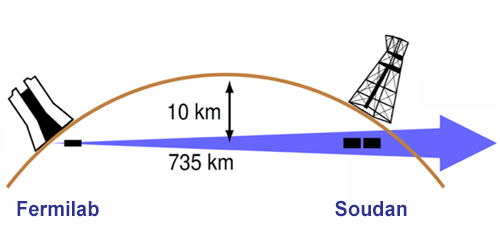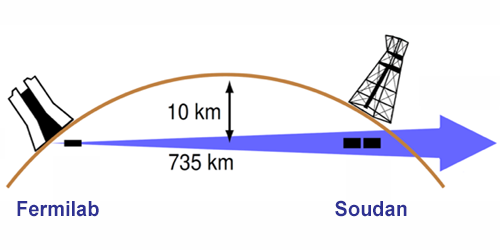Testing Quantum Physics with Neutrinos
If you measure a system (such as a cat) and find it in one state (alive), you might assume it was in that state before your measurement. But quantum physics defies this classical (or realist) view of the world. Certain experiments have shown that quantum systems exhibit time correlations that violate the so-called Leggett-Garg inequality (LGI), which bounds classical theories. A new LGI test using neutrino oscillation data provides the longest distance verification of quantum physics to date.
The LGI test is the time analogue of the well-known Bell inequality test. Rather than measure two systems at different locations (as in Bell), an LGI experiment traditionally measures the same system at different times. The quantum prediction is that correlations between different measurements can exceed a bound set by classical models. Previous LGI tests have used a variety of systems, including superconducting qubits and photons.
One concern with LGI tests is that a stubborn “realist” could claim the measurements disturb the system and skew the results. In their neutrino-based test, Joseph Formaggio and his colleagues from the Massachusetts Institute of Technology, Cambridge, minimized disturbance by comparing measurements on separate groups of neutrinos. The team analyzed data from the MINOS neutrino experiment, which measures a beam of muon neutrinos with two detectors—one near the source at Fermilab and the other 735 km away in the Soudan Mine, Minnesota. The far detector shows a deficit of muon neutrinos, due to quantum oscillations. Formaggio and co-workers selected 715 sets of data points from the MINOS sample and found that 577 of these sets violated the classical limit. The results rule out a class of realist models in which the evolving system does not depend on any “memory” of its initial state.
This research is published in Physical Review Letters.
–Michael Schirber
Michael Schirber is a Corresponding Editor for Physics based in Lyon, France.





